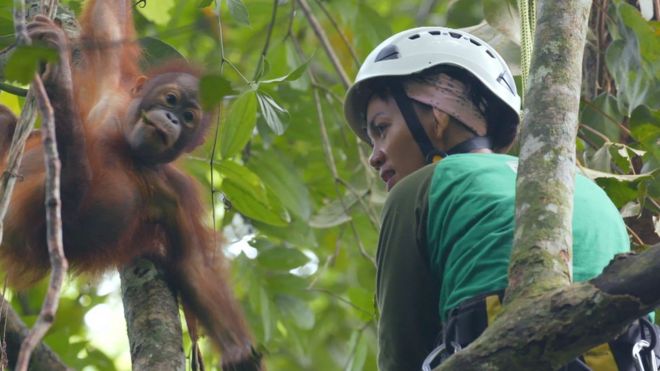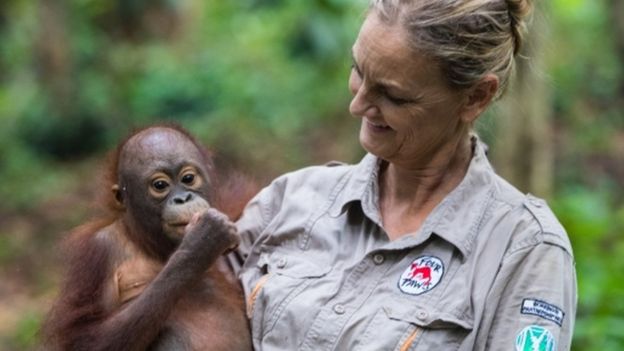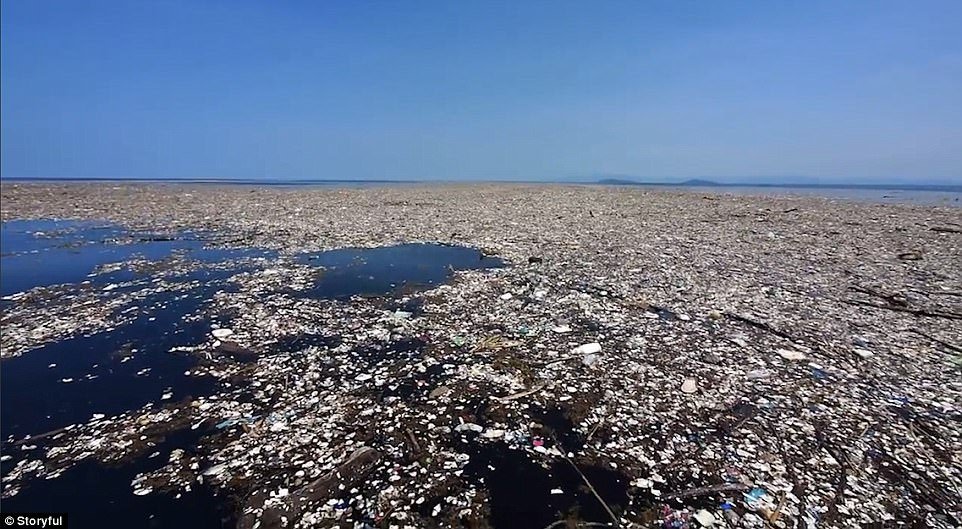
An orphan orangutan climbs high in the treetops with his caregiver
Orangutans are hunted for meat or sold into the illegal wildlife trade. One dedicated doctor saves and rehabilitates captured orangutans and raises orphaned babies.
While much of the world is in lockdown, youngsters in one very unusual classroom are still having lessons. At a forest school in Borneo, baby orangutans learn tree-climbing skills from their human surrogate parents.
The orphans spend 12 hours a day in the forest, preparing for a new life in the wild. With human contact routinely kept to a minimum, life goes on much as before for the animals, says Dr Signe Preuschoft, leader of ape programs for the charity Four Paws, which runs the rehabilitation centre in East Kalimantan (Borneo Indonesia).
As a precaution, the staff now have temperature checks, wear facemasks and change into uniforms on site.The pandemic has disrupted many conservation programs around the world but Dr Preuschoft says it also offers an opportunity to bring positive change.
"There are great opportunities here to protect wildlife better from illegal wildlife trade and from (consumption of) bushmeat," she says. "It's very much about education."

Dr Preuschoft with an orphaned orangutan
The young orphaned apes climb high into the treetops with their caregivers to help them acquire the skills they would have learned from their mothers in the wild. They would otherwise spend more time on the ground than is natural for a species that feeds, lives and sleeps in the canopies of trees.
Baby orangutans have a huge advantage when it comes to climbing, as they can hold on "like an octopus", says Dr Preuschoft.
"I think the orangutans were really completely thrilled when they realised that they could actually be high in the tree canopy together with one of their moms," she adds.
As soon as the rescued orangutans have moved out of quarantine, they spend long hours in the forest in as natural an environment as possible. They are taught essential forest survival skills in a large forested area between the cities of Balikpapan and Samarinda.

Dr Signe Preuschoft and her team are passionate about rehabilitating orphaned baby orangutans
The aim is to provide sanctuary to illegally captured or directly threatened orangutans, as well as to rehabilitate orphaned orangutans, with the goal of releasing them back into the wild.
Only about 50,000 Bornean orangutans are left in the world, with numbers plummeting over the last 70 years. Loss of rainforest to oil palm plantations or coal mining leads orangutans into conflict with humans.
Orphans are snatched from their dead mothers and are sold or held illegally as pets. Why do we wait until a species is seriously endangered before we do anything to help them?


